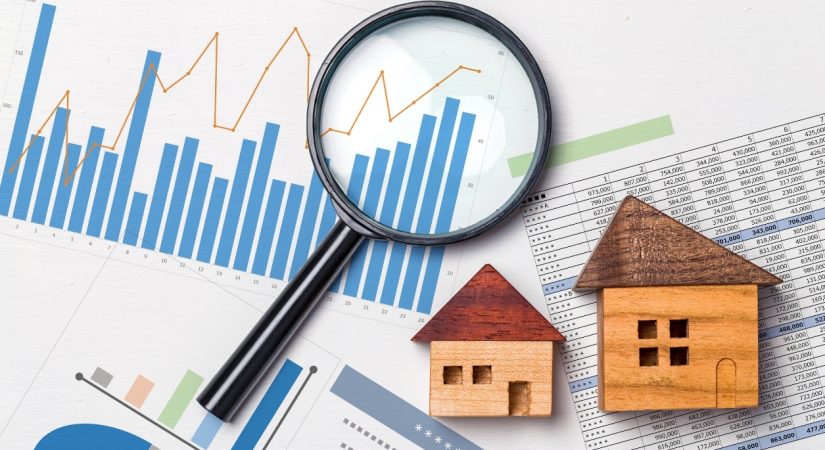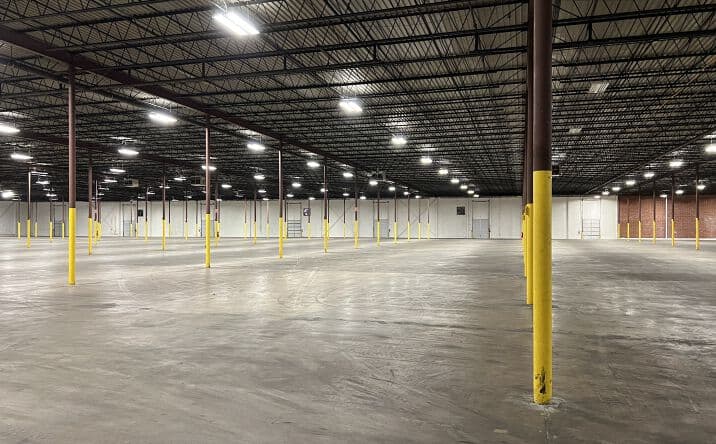The real estate industry has continuously evolved with technological advancements that simplify processes and improve the overall user experience. Among these developments, the integration of Multiple Listing Services (MLS) with appraisal software is one of the most significant innovations. By linking MLS platforms with appraisal software, real estate professionals can enhance the accuracy, efficiency, and transparency of property valuations.
MLS platforms serve as a centralized database that provides detailed property listings, including photos, descriptions, and price histories. Appraisal software, on the other hand, is used by licensed appraisers to assess a property’s value based on factors like location, condition, comparable sales, and market trends. By enabling seamless communication between MLS and appraisal software, real estate professionals can better determine the true market value of a property, make informed decisions, and ultimately streamline the home buying and selling process.
This integration has the potential to create a more efficient, accurate, and transparent valuation system. In this article, we will explore the benefits, challenges, and the process of linking MLS platforms with appraisal software.
What is MLS and Appraisal Software?
MLS (Multiple Listing Service):
An MLS is a system used by real estate professionals to share detailed information about properties available for sale or rent. It typically includes property features such as square footage, number of bedrooms, listing price, and other relevant data. MLS platforms are designed to help real estate agents, brokers, and buyers access and share property listings in an organized, standardized way.
Appraisal Software:
Appraisal software is a tool used by licensed real estate appraisers to generate property appraisals. These appraisals help determine the market value of a property based on various factors such as the property’s condition, location, comparable sales (comps), and market trends. Appraisers use these tools to create detailed reports that help buyers, sellers, lenders, and other stakeholders understand the true value of a property. Common appraisal software tools include a range of features such as automated valuation models (AVMs), integrated databases for comps, and real-time market analysis.
Benefits of MLS and Appraisal Software Integration

Accurate Property Valuations
MLS platforms provide a wealth of data about a property, including historical price trends, square footage, and comparable property listings. When integrated with appraisal software, appraisers can access MLS data directly, ensuring that valuations are based on the most up-to-date and accurate information available. This results in more accurate appraisals and helps buyers, sellers, and lenders make better-informed decisions.
Streamlined Workflow
Traditionally, appraisers would manually search through MLS listings for comparable properties (comps) to help determine a property’s market value. With MLS-appraisal software integration, this step can be automated. Appraisers can easily pull relevant data from the MLS and use it to inform their analysis. This integration reduces the time spent searching for comps, entering data, and generating reports, which improves efficiency for both appraisers and real estate professionals.
Improved Efficiency for Real Estate Professionals
Real estate agents and brokers often need appraisals for the properties they are selling or representing. By linking MLS with appraisal software, agents can access accurate, real-time property appraisals and pricing data, speeding up the process and reducing the time it takes to list a property or close a sale. This also eliminates the need for separate systems, reducing administrative overhead and improving workflow.
Enhanced Collaboration and Communication
When MLS platforms are integrated with appraisal software, communication between real estate professionals, appraisers, and lenders becomes more streamlined. Appraisers can easily access MLS data to support their valuations, and agents can access accurate appraisals that align with market trends. This enhances collaboration and reduces misunderstandings, as all parties have access to the same information in real-time.
Reduced Errors
Manual data entry and switching between different platforms can lead to errors, including incorrect information about a property’s characteristics, history, or value. By integrating MLS with appraisal software, these errors are minimized. Data can flow seamlessly from MLS to appraisal software, ensuring that appraisers are working with the most accurate and up-to-date property data, reducing the risk of inaccuracies in the final appraisal report.
How MLS and Appraisal Software Integration Works
Data Sharing and API Integration
One of the most common ways to integrate MLS and appraisal software is through APIs (Application Programming Interfaces). APIs allow different software systems to communicate and share data seamlessly. For example, when an appraiser opens their appraisal software, the system can automatically pull the most relevant data from the MLS, including the property’s features, listing history, and comparable properties in the area. This data can then be used to generate a property’s market value.
Real-Time Market Analysis
MLS platforms track changes in the real estate market, such as new listings, price reductions, and sales transactions. When MLS is integrated with appraisal software, appraisers can instantly access real-time market data. This enables them to evaluate a property in the context of current market conditions, rather than relying on outdated data or estimates. Real-time access to MLS data also means that appraisers can continuously update their reports as new information becomes available.
Automated Valuation Models (AVMs)
AVMs are tools used in appraisal software to generate automated property valuations based on factors such as comparable sales, location, and property features. When integrated with MLS, AVMs can access a wider range of data to produce more accurate property estimates. For instance, an AVM can consider not only recently sold properties but also MLS listings that might be undervalued or overvalued based on current trends. This enables a more holistic approach to property valuation.
Integrated Reporting Features
Many MLS platforms allow users to generate detailed reports for properties listed on the system. When integrated with appraisal software, these reports can include MLS data such as property history, comparable sales, and local market trends. Appraisers can use this information to support their valuations and generate comprehensive appraisal reports that are more informed and accurate.
Challenges in MLS and Appraisal Software Integration
Data Privacy and Security Concerns
One of the main challenges when linking MLS with appraisal software is ensuring the privacy and security of the data being shared. Both MLS platforms and appraisal software handle sensitive information about property ownership, market values, and financial transactions. Ensuring that this data is protected through encryption and other security measures is crucial. Proper data management and access controls must be in place to prevent unauthorized access and data breaches.
Standardization of Data
MLS platforms and appraisal software often use different formats and terminologies. For instance, property features may be described differently across platforms (e.g., “3 bedrooms” vs. “three bedrooms”). To ensure accurate integration, it’s essential that MLS platforms and appraisal software can map data to standardized formats. This requires collaboration between software developers, MLS providers, and appraisal platforms to ensure compatibility.
Integration Costs
Integrating MLS with appraisal software can be an expensive and time-consuming process. Real estate agencies, appraisal firms, and software providers must work together to implement the integration, which may require custom development or third-party middleware solutions. Additionally, ongoing maintenance and updates to the integration system can incur costs. However, the long-term benefits of improved efficiency and accuracy often outweigh these initial expenses.
Adoption Challenges
Not all MLS platforms or appraisal software tools are equipped for integration. Smaller agencies or independent appraisers may find it difficult to adopt integrated systems due to technological or financial constraints. Overcoming these barriers may require additional training, infrastructure upgrades, or a transition to more modern, cloud-based software solutions.
Best Practices for Integrating MLS and Appraisal Software
Collaborate with Trusted Partners
To ensure a smooth and successful integration, it’s important to work with experienced developers and technology providers who specialize in MLS and appraisal software. These experts can help ensure that the integration meets the needs of all stakeholders and functions properly from the start.
Focus on Data Quality and Consistency
MLS and appraisal software should use standardized formats to ensure data accuracy and consistency. When setting up integration, make sure that all property information, including features, pricing, and comparables, is aligned across systems to avoid discrepancies.
Ensure Robust Security Measures
Given the sensitive nature of real estate transactions, security should be a top priority when integrating MLS with appraisal software. Implement encryption, secure access protocols, and other measures to ensure that property data is kept safe and only accessible to authorized users.
Provide Ongoing Training and Support
Real estate professionals, appraisers, and agents will need proper training on how to use the integrated system effectively. Providing clear training materials, online resources, and ongoing support will help ensure that the integration process runs smoothly and that users can make the most of the new system.
Conclusion
Integrating MLS platforms with appraisal software has the potential to revolutionize the real estate industry by streamlining the property valuation process, enhancing transparency, and improving overall efficiency. By providing accurate, real-time data, enabling automated workflows, and improving collaboration among agents, appraisers, and clients, this integration benefits everyone involved in the home buying and selling process.
While there are challenges to overcome, such as ensuring data privacy, standardizing formats, and managing integration costs, the advantages far outweigh the obstacles. With proper planning, secure systems, and collaboration among key stakeholders, MLS and appraisal software integration can lead to more accurate property appraisals, faster transactions, and greater overall satisfaction for all parties involved.













